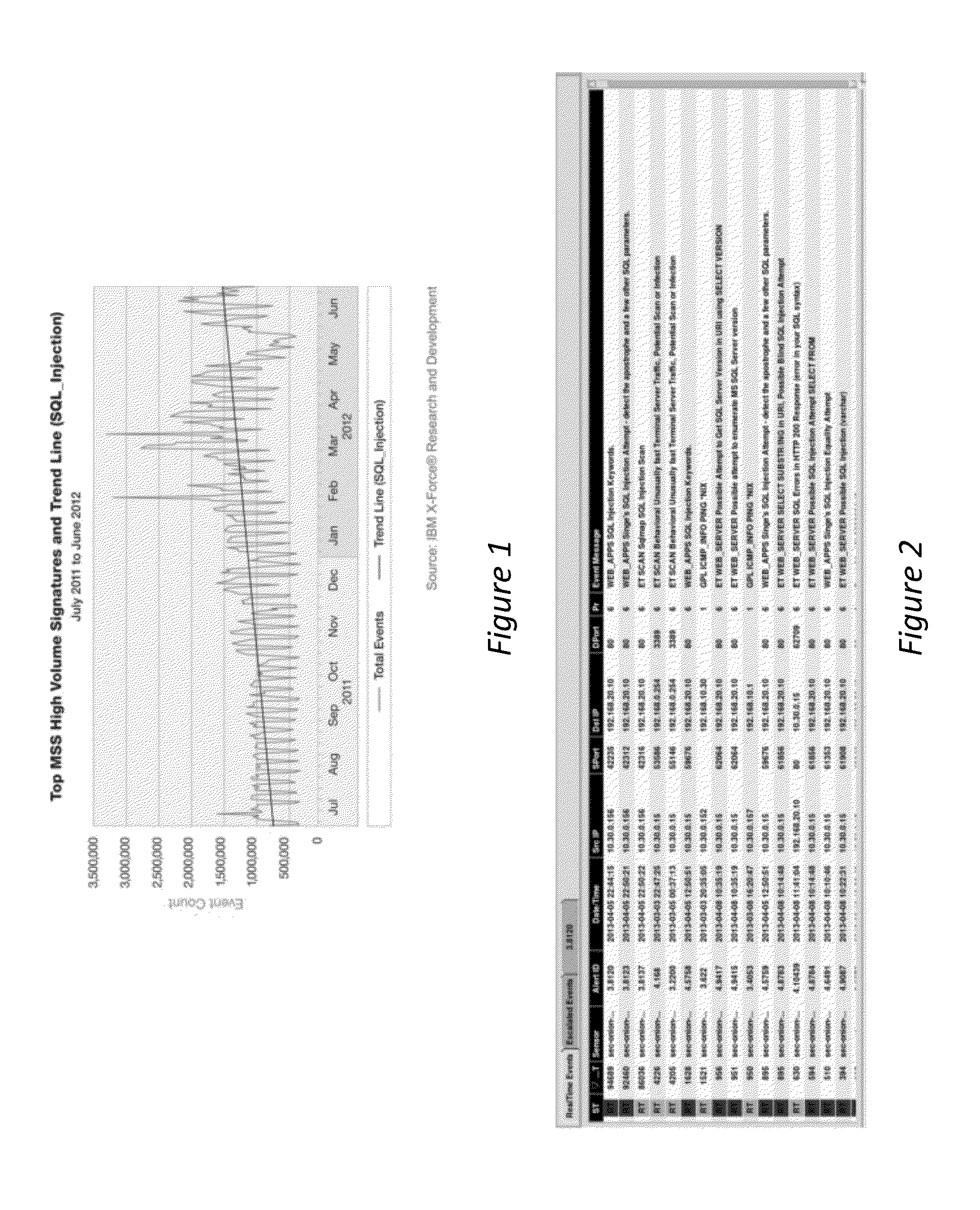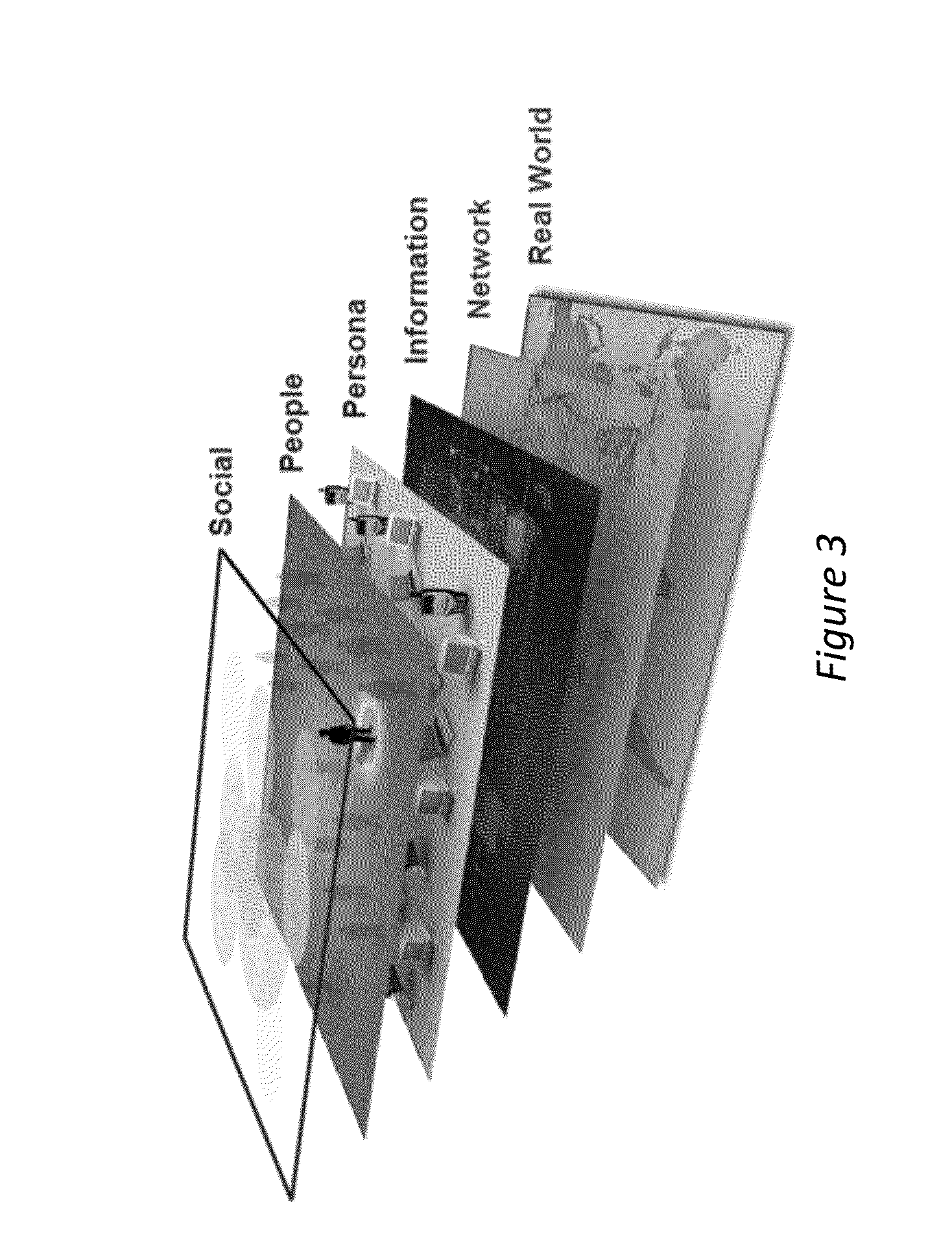Profiling cyber threats detected in a target environment and automatically generating one or more rule bases for an expert system usable to profile cyber threats detected in a target environment
a cyber threat and target environment technology, applied in the field of computing apparatus and computer network security, can solve the problems of increasing cyber threats, and affecting the effectiveness of risk evaluation
- Summary
- Abstract
- Description
- Claims
- Application Information
AI Technical Summary
Benefits of technology
Problems solved by technology
Method used
Image
Examples
example embodiment
Detailed Example Embodiment
Example Operation
[0349]The CTP 410 tool set utilises a number of discrete process that examine directly or indirectly the PCAP files associated with the SQLIA. The types of mathematical analysis carried out are defined in the previous section.
[0350]The feature extraction and predictive model generation process identified a number of attributes that could be grouped into a cluster of associated configurations. These clusters then form the basis fuzzy rule generation process to generate rules for use in the fuzzy inference process. As can be seen from FIG. 15, which shows the rule set for ‘SQL_Risk’ rule set which examines the actual SQLIA detected to identify the CT risk to the target environment 410 taking into account the features concerning the SQL attack profile alone. In this regard, the J48 algorithm has identified SQL_Attack, SQL_Appropriate, SQL_CLI and SQL_Function packet attributes as a set of related attributes that give a dominant effect in clus...
PUM
 Login to View More
Login to View More Abstract
Description
Claims
Application Information
 Login to View More
Login to View More - R&D
- Intellectual Property
- Life Sciences
- Materials
- Tech Scout
- Unparalleled Data Quality
- Higher Quality Content
- 60% Fewer Hallucinations
Browse by: Latest US Patents, China's latest patents, Technical Efficacy Thesaurus, Application Domain, Technology Topic, Popular Technical Reports.
© 2025 PatSnap. All rights reserved.Legal|Privacy policy|Modern Slavery Act Transparency Statement|Sitemap|About US| Contact US: help@patsnap.com



